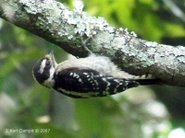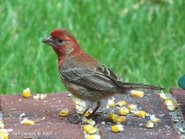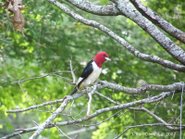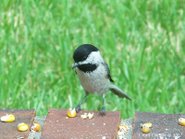 The fall migration has been great so far this year! I've seen a number of birds that are not here year round. The newest one is the White-Throated Sparrow.
The fall migration has been great so far this year! I've seen a number of birds that are not here year round. The newest one is the White-Throated Sparrow.
There are two variations of this sparrow, one with a tan-stripe and the other with a white-stripe. I'm not really sure, but I may have both.
This little fellow is very distinctive with a yellow supraloral mark next to its bill. Both variations have a strongly outlined white throat.
They are very common in brushy patches in woods. They feed on the ground and kick the ground with their feet to stir it up.
Check out The Nemesis Bird for a great post on more interesting details of the White-Throated Sparrow.

























